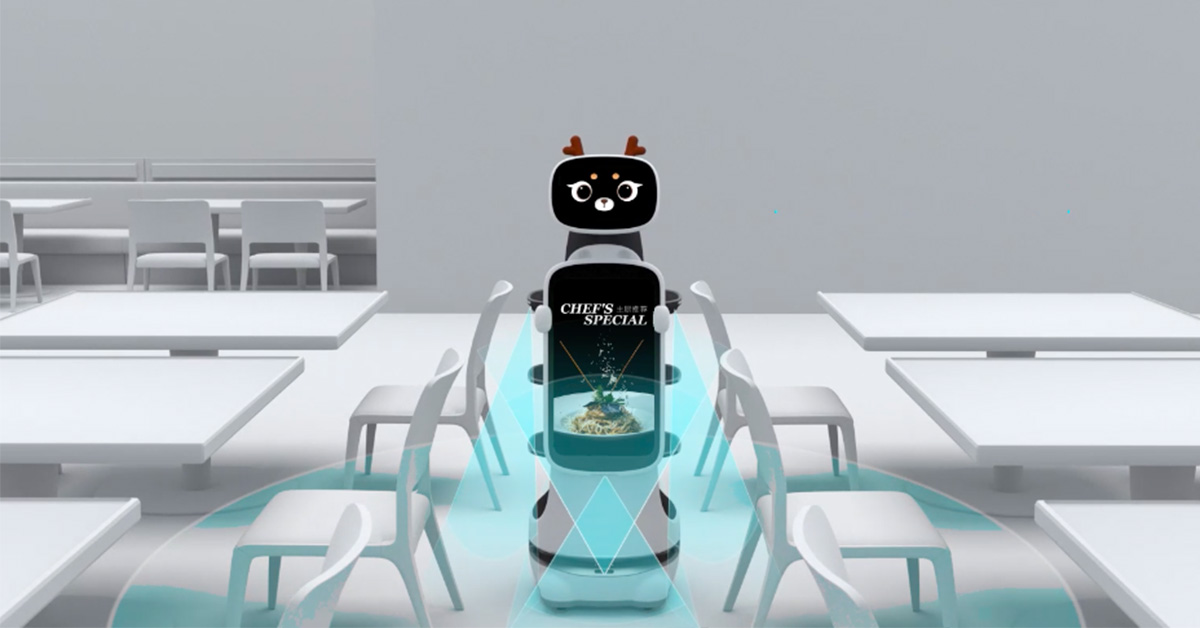
Ever more present in cafes, restaurants and hotels, robot waiters are becoming essential allies in a period characterised by staff shortages and a growing attention to the quality of work, a central theme for the new generations. These robots represent an innovative solution to improving operational efficiency and lightening the workload of human staff, creating a more sustainable work environment. However, the real dilemma lies in finding the right balance between artificial intelligence and the human touch, a crucial aspect in maintaining the human element of hospitality and enhancing workers’ contribution.
We discussed this with Francisco Javier Martin Romo, an expert in robotics and technological innovation in the hospitality sector and EMEA Country Manager of Keenon Robotics, a leader in robotics applied to the service sector. Keenon Robotics already boasts a few hundred robots that have been “hired” and are operational in Italy.
How are robots used in hospitality in Italy vs Europe, and what is the adoption trend?
The most obvious trend is the constant growth in the adoption of robots in the hospitality sector. In this context, Italy is positioned among the leading European countries in terms of adoption (especially in luxury hotels and restaurants).
In Italy, there is a significant presence of robots operating in hotels on multiple floors, integrating with elevator systems to facilitate operations in complex facilities. In addition, distributors and end customers in Italy show high proactivity in requesting new integrations of our robots with other systems and solutions.
What are the main functional differences between simple service robots and those with advanced AI? What hospitality contexts do you think can reap the most significant advantages from using each type?
First of all, I think the term “Artificial Intelligence” has been used a lot lately and, in many cases, applied to situations where it is not really AI.
In the field of software for “indoor delivery robots”, there has been significant progress in navigation capabilities, allowing robots to operate and interact in increasingly complex environments.
We also see a trend towards integration with large language models (LLM), such as ChatGPT and Gemini, as well as other solutions. The main goal here is that robots can converse with customers, provide information, and, in some cases, even carry out activities like making reservations.
Personally, I believe that the next step will be the use of speech-to-text and text-to-action AI solutions that allow operators to interact with robots through natural language. However, many issues remain to be dealt with.
How are AI technologies integrated into your robots to improve the guest experience and optimise operational processes?
In the case of Keenon, we are developing an advanced solution that I can’t talk about yet.
In general, I believe the industry is working on integrations with large language models (LLM) and other solutions to make more natural and effective human-robot interaction possible.
Also, while we cannot talk about AI as such, the navigation capabilities of our robots are constantly improving, which has a direct positive impact on operations and customer perception.
What are the main challenges in introducing robots in the hospitality industry, and how do you address the issue of balancing automation and human value, especially in an industry that relies heavily on personal interaction?
I believe the main challenge is making the product known and then advising our clients on how to introduce it efficiently into their businesses.
Regarding the human touch in hospitality, I come from a hotel management background and I always keep in mind the famous phrase “Ladies and Gentlemen, serving Ladies and Gentlemen”. Service is at the heart of the customer experience.
That having been said, the robot is a professional piece of equipment, just like a smart oven or a service cart. The robot carries out tasks that support people in operations, allowing them to spend more time and effort on value-added tasks such as direct guest service.
Looking to the future, what skills do you think human personnel will need to develop in order to work in synergy with robots?
Above all, robots will certainly have to adapt to and coordinate with us and our way of working. “Human-robot interaction” is the key to robotics in the service sector.
Humans will need to be flexible in learning and adapting to these new work tools. People will need to focus on what humans do best and learn to delegate purely mechanical tasks to robots, thereby optimising operational efficiency and improving the customer experience.
Francisco Javier Martin Romo will speak on the “Human Robotics: Technology and Humanity in the Hospitality of the Future” panel at BTO 2024.
The interview was curated by Giulia Eremita, coordinator of the topic “Digital Strategy”.
We look forward to seeing you in Florence on November 27 and 28, 2024.
